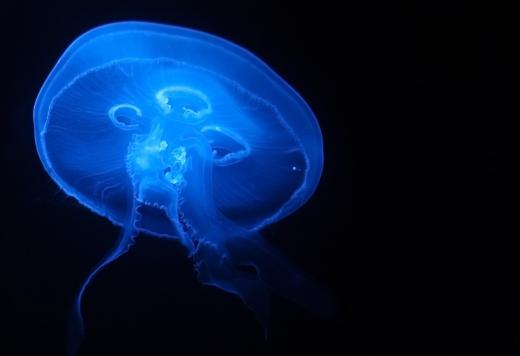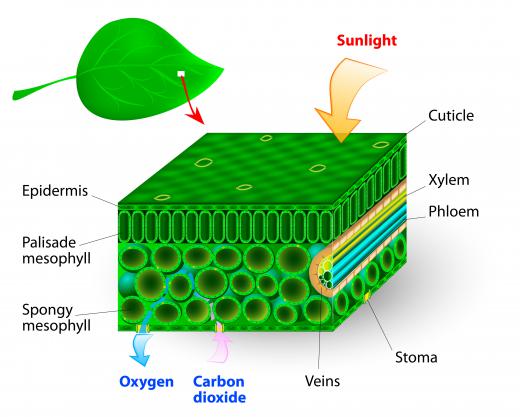What is Photochemistry?
 Mary McMahon
Mary McMahon
Photochemistry is a branch within the field of chemistry which is focused on the study of chemical reactions which involve light, either because light acts as a catalyst for reactions, or because reactions produce light. On a more detailed level, it could be said to involve the study of the interactions between photons and molecules. This field is highly interdisciplinary, with people in disciplines such as biology and physics being interested in various aspects of photochemistry.
Photochemical reactions can happen in a variety of ways. When molecules absorb a photon, they get excited, which can trigger a response such as isomerization, in which the atoms in a molecule rearrange themselves, or a simple emission of light, or the breaking or forging of chemical bonds. Certain chemical reactions can also result in the emission of photons, another topic of interest in photochemistry, and among mad scientists, if the glowing beakers in popular films are any indication.

In addition to studying light in the visible spectrum, photochemists also look at infrared, ultraviolet, and other areas of the spectrum. Emissions from different areas of the spectrum can be involved in very different types of reactions, making spectroscopy an important part of photochemistry. Research typically takes place in a laboratory environment, in which people have access to very sensitive equipment which can be used to make observations and conduct experiments.

One common example of photochemistry is photosynthesis, the technique used by plants to generate energy from light, using the sun as a catalyst for chemical reactions which take place inside the plant. Bioluminescence, another natural phenomenon, is another excellent example of photochemistry at work; animals use bioluminescence for everything from signaling other organisms, as fireflies appear to do, to luring in prey, as seen with anglerfish in the ocean. Photography also relies on the principles of photochemistry, from the use of photosensitive compounds on film which react when exposed to light to the employment of stop and fixer in the developing room to put a halt to photosensitive reactions which occur in the coatings used on photo paper.

Numerous colleges and universities offer training in photochemistry to students in their chemistry departments, and some have entire departments devoted to the study of photochemistry. People who are interested in this field can work in a wide array of environments, depending on their interests and their level of education. Work as a photochemist is certainly rarely dull, thanks to the myriad of topics which can be explored.
AS FEATURED ON:
AS FEATURED ON:













Discussion Comments
Photochemistry sounds interesting! Through all my schooling I was never taught much about this though, so until now I didn't even have an idea what it was.
I did not know that light can help create chemical reactions and chemical reactions produce light!
I am not very clever when it comes to science, so being a photochemist would probably be a bad choice for me.
I would love to see a photochemist in action though! It seems like it would be fun to see different chemical reactions right in front of you! This would only be fun if a skilled professional was around though, otherwise it would be very dangerous!
Post your comments